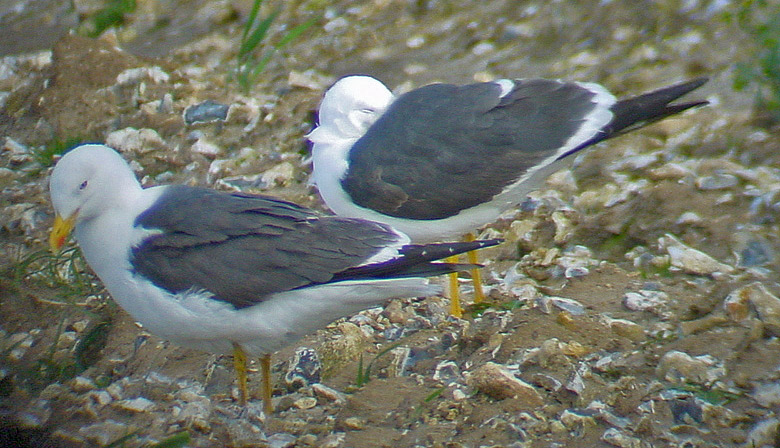 Lesser Black-backed Gull (graellsii & intermedius)
Lesser Black-backed Gull (graellsii & intermedius)
(last update: May 17 2015)
lbbg 1cy May
lbbg 1cy June
lbbg 1cy July
lbbg 1cy August
lbbg 1cy September
lbbg 1cy October
lbbg 1cy November
lbbg 1cy December
lbbg 2cy January
lbbg 2cy February
lbbg 2cy Mar-April
lbbg 2cy May
lbbg 2cy June
lbbg 2cy July
lbbg 2cy August
lbbg 2cy September
lbbg 2cy October
lbbg 2cy Nov - Dec
lbbg 3cy Jan-April
lbbg 3cy May
lbbg 3cy June
lbbg 3cy July
lbbg 3cy August
lbbg 3cy September
lbbg 3cy October
lbbg 3cy Nov - Dec
lbbg sub-ad Jan-April
lbbg sub-ad May
lbbg sub-ad June
lbbg sub-ad July
lbbg sub-ad Aug
lbbg sub-ad Sept
lbbg sub-ad Oct
lbbg sub-ad Nov
lbbg sub-ad Dec
lbbg adult January
lbbg adult February
lbbg adult March
lbbg adult April
lbbg adult May
lbbg adult June
lbbg adult July
lbbg adult August
lbbg adult September
lbbg adult October
lbbg adult Nov - Dec
LBBG 3cy, May 05 2001, Dannes, NW France.

Regarding the primaries and secondaries, this bird resembles a 3cy LBBG with second generation primaries, acquired last autumn. But many features (e.g. upper-parts and bare parts) may apply to 4cy as well. See the second image, with a typical 4cy in the foreground to compare with. Both birds probably belong to the race intermedius.
The far bird shows scapulars and coverts which are at least third (old grey) and fourth generation (dark grey-black scapulars), grey as in intermedius, except the outer greater coverts. In the greater coverts, the inner 1-6 are fresh, the outer greaters are old, except #14-15, which have been moulted recently as well. All inner medians (about #1-15) are new and the same applies for the lesser coverts (except the carpal edge).
P1 and P2 have a very small white tip and a faint pale brown apical spot on the outer web. All other primaries (P3-P10) have no white tips, although faint brownish tips are visible at close examination (but are not really "white tips", more the commonly seen paler edges at the far top of the feathers).
The secondaries show brown centres with a white tip, not really as a zigzag pattern (seen in most 3cy LBBG in spring). Nevertheless, those secondaries are probably not third generation, because they lack the obvious grey centre with the white tip. Some spaghetti pattern is visible at some secondaries, more in line with second generation secondaries (hence typical for 3cy). Note however that some third generation secondaries (the first moulted?) may show vermiculation. The legs are yellow as in many adults, the bill is yellow with a red gonydeal spot, partly obscured by a black bill-band.
In the tertials, the upper two have no white tips and are probably brown-grey second generation feathers, the other probably being third generation, clearly moulted more recently. The tail is white.
Such advanced 3cy LBBG can probably be found in any large group of intermedius in spring. Such individuals, with advance body moult, combined with arrested moult in the primaries are very hard to distinguish from fuscus, based on a description alone. Often, single features seem to be missing to really make such birds fuscus candidates. Others are maybe best left unidentified, regarding subspecies and just labeled LBBG.
In the bottom picture (which is over-exposed on purpose; see the white head) note the moult stage in the coverts. The top picture gives a better idea of circumstances in the field, but is slightly over-exposed as well.
